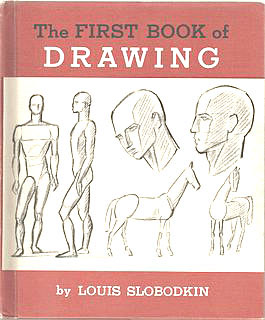

First |
Previous |
Next |
Last |
Book Index

|
Author: Louis Slobodkin Copyright Date: 1958 Publisher: Franklin Watts Pagination: 68 p. |
|
I N T R O D U C T I O N
The ancient Greeks (some of whom you know were great artists) used the same word for “drawing” as they did
for “writing.” It made good sense, really. When we draw we are actually saying with lines and smudges on paper what we know and think
about these shapes, movement, strength, or weakness—and a lot of other things—of the person, animal, or object we are trying to draw. T H E S H A P E S O F T H I N G S Just about anything you see has its own special shape. And that special shape is made up of smaller shapes. They are the most important reason why things look the way they do. When you make a drawing of something, you are really drawing its main shape and the smaller shapes that are part of it. Therefore, the first thing you need to learn is to see and know these shapes. D R A W I N G T H E S H A P E S
Have you ever noticed that the drawings of most beginners look flat and unreal?
|
||
First |
Previous |
Next |
Last |
Book Index